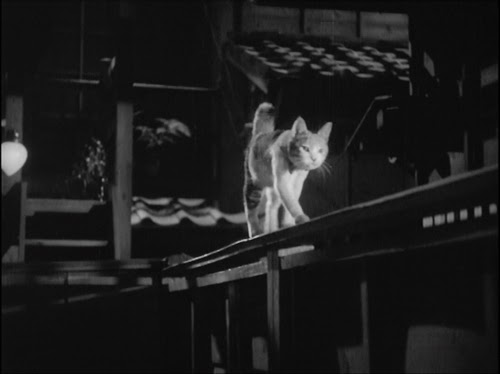Giovanni (Mastroianni) and Lidea (Moreau) are a married couple going through problems with their relationship in Milan, Italy. Giovanni is a well-known author. They visit their friend Tommaso, who is dying in a hospital bed. They celebrate the release of Giovanni's new book with champagne, knowing that this is one of the last times they will see each other. Giovanni meets an ill patient in the corridor, and starts uncontrollably kissing her. He tells Lidea about this, but she says she doesn't mind. After a book signing Lidea wanders around Milan, past street fights and rocket launchers. They eventually arrive at a party, where Giovanni is introduced to Valentina (Vitti). During the night, their faint love grows even more distant.
Michaelangelo Antonioni is not to everyone's taste. When I saw 'Red Desert' and 'L'Eclisse', I didn't understand the hype behind him. After watching 'L'Avventura', 'Il Grido' and 'The Passenger', I feel like I understand his style and approach to movies. He is a great film-maker, but shouldn't be compared to Fellini and Bergman.
His films are character studies into failing relationships, while examining the human condition. His films never have happy endings, whether it's suicide, a divorce or imprisonment. Antonioni's outlook on life, is a dim and depressing one, but it makes for some intriguing movies. 'La Notte' is no different from his other works, but is a highlight of his Italian films.
The cast is as good as it can get. Antonioni's muse, Vitti, is on form and gives another fine performance. Moreau, who has worked with Malle, Welles and Truffaut, plays the part of Lidea fantastically. She is ideal for the part. Mastroianni has been amazing in everything he has been in, and is Italy's most loved actor. He brings a distinct character to every role he plays. It is an phenomenal cast, that bring the characters to life.
The story is slow, and takes it's time to tell. All the usual Antonioni auteur trademarks are included (as mentioned above), but used to full force. Venanzo, Antonioni's cinematographer, embraces his style, making 'La Notte' as visually impressive as 'Il Grido'. The slick camera movements combined with the perfectly composited shots, create a stunning film. Every single frame is a feast for the eyes, which is a great achievement.
The story is far more captivating than some of his other works, resulting in an emotional final scene. This is still Antonioni, so don't start watching expecting to be entertained as his pessimistic view on relationships is still present in this film. To enjoy it the most just sit back, relax and let the film take you on a journey.
One of Antonioni's best works. A captivating film that shows the beauty of Italy.
SCORE
79






























